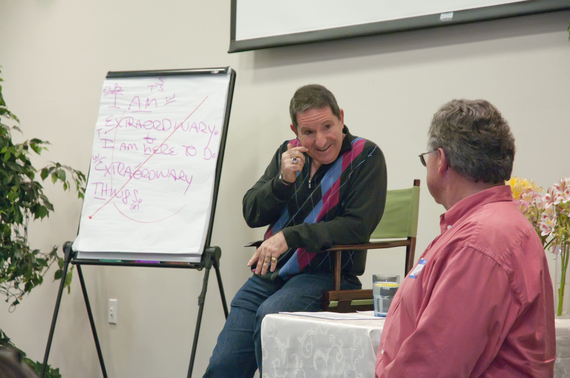Most voice teachers exercise the voice as though they were exercising in a gym, with warm-ups that are often calisthenically-based -- building technical ability, but missing the opportunity of intentionally connecting with our essential selves. If you are compelled to develop your voice whether for speaking or singing, understand that in Vocal Awareness we do every exercise whether a breathing exercise or a vocal exercise as though you are a ballet dancer at the barre -- aesthetically, conscientiously -- never robotically. In this way you create the opportunity to be more confident in your voice and, also, more integrative at all times so that what you are reflecting is the integrity of who you are through your Voice, both inner and outer.
Remember: Breath is fuel. Your voice is the most unique muscle in your body. It is designed as both a wind instrument and a string instrument. All it does is stretch and vibrate like a violin string, but the action that makes it work is pressure flow -- air -- just like a flautist.
Here are three ways to improve your voice without a voice teacher:
1.Don't simply take breath, rather allow breath. When we "take" breath, the chest rises, the larynx and tongue constrict a bit and, acoustically, we have less opportunity to maximize our vocal potential because of the tension created. When we "allow" breath, which in practice takes 5-7 seconds, it is slow and silent. Never rush the breath. Allow it.
2.Body language is as important to you as a communicator (whether speaking or singing) as it is in any other art form or athletic discipline. First and foremost, observe yourself standing in Stature on your mirror and notice that, as you pull an invisible thread from the top of your head, the first impulse is for the body to inhale. Your abdominal muscles elongate. At the peak of that Stature, the silent, loving breath that in Vocal Awareness we call Conscious, Loving Breath, merges and connects to the sound you want to make right at the peak of your inhalation.
3.Practice integrating breath and sound -- slowly, conscientiously, on your mirror -- by beginning in Stature, allowing a Conscious, Loving Breath, and energizing your voice with conscientious support and the release of all upper body tension.
Also, remember when you practice, please, no judgment. When I teach singing in Vocal Awareness, I will often tell first-time students: The act of singing is natural. The art of singing is skill. Be patient, gentle and supportive. Practice always with your recorder on and listen back. Always practice with the mirror. Again, as the dancer trains with a mirror, so must you. It helps you to be observant and more attuned to what is happening kinesthetically. It helps break unconscious habits that you may not even be aware of, such as jaw tension, neck and shoulder tension, etc.
As you develop your voice for singing, please know that singing is the most hedonistic thing there is to do. We are often called to do it because it feels good for us. So, please, enjoy your exercises. Enjoy practicing your breathing. Enjoy discovering and developing your Voice. In preparing your Voice to be the best public speaker you can be, the same techniques are required combined with the same belief system with one additional awareness: Never present who you are, rather be who you are. Vocal Awareness is designed to help you claim your Self and the axiom is: Voice is Power.

